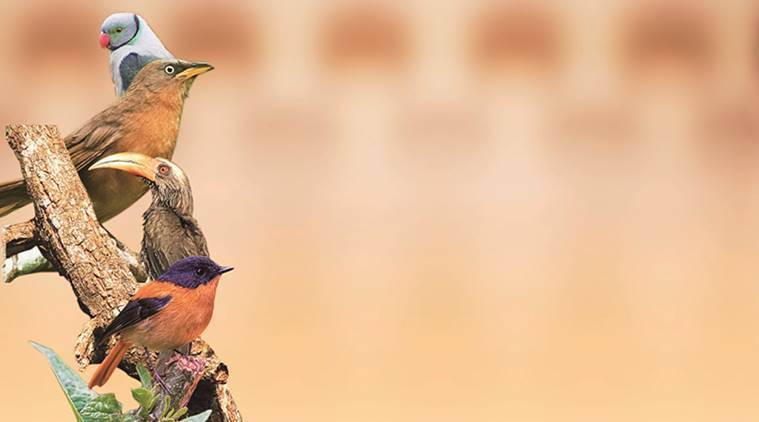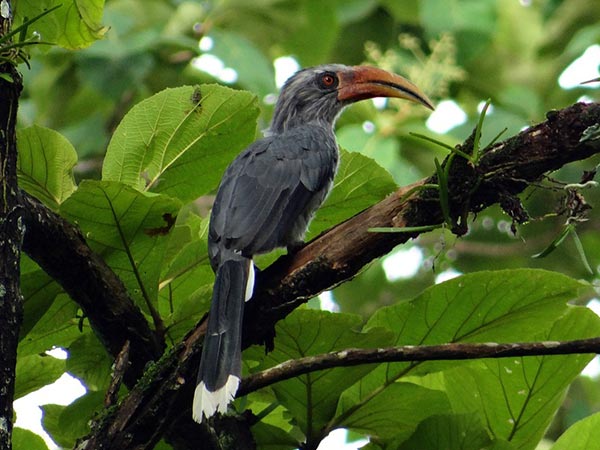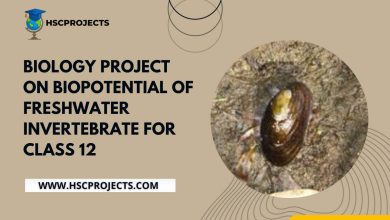
Biology Project On Migratory Birds Of Maharashtra For Class 12
Acknowledgement:
I am sincerely grateful to my esteemed biology teacher, Mr. /Ms. [Teacher’s Name], for their unwavering support and invaluable guidance throughout the duration of this project. Their expertise and encouragement have played a pivotal role in the successful completion of this endeavor.
Mr. /Ms. [Teacher’s Name] has consistently demonstrated a deep passion for biology and a profound understanding of the subject matter. Their commitment to nurturing our intellectual growth has inspired me to delve into the fascinating world of migratory birds in Maharashtra.
Their guidance has been instrumental in shaping the structure and content of this project. They have provided insightful suggestions, challenged my thinking, and encouraged me to explore diverse perspectives. Their expertise in the field of biology has been invaluable in helping me grasp complex concepts and ensuring the accuracy of the information presented in this project.
I am grateful for their patience and dedication in answering my queries and providing clarifications whenever I faced challenges. Their unwavering support and encouragement have instilled in me a sense of confidence and enthusiasm for my academic pursuits.
Furthermore, I would like to express my gratitude to my classmates who have contributed to this project through discussions, sharing resources, and providing valuable feedback. Their collaborative spirit has enriched the learning experience and enhanced the quality of this project.
I would also like to acknowledge the role of my family and friends who have supported and encouraged me throughout this journey. Their constant motivation and belief in my abilities have been a driving force behind the successful completion of this project.
In conclusion, I extend my deepest appreciation to Mr. /Ms. [Teacher’s Name] for their exceptional guidance, unwavering support, and invaluable insights. Their mentorship has not only helped me in completing this project but has also instilled in me a lifelong love for biology and a passion for exploring the wonders of the natural world.
Introduction:
The world of migratory birds is a captivating realm filled with incredible journeys and remarkable adaptations. These avian wanderers undertake extraordinary feats, traveling vast distances across continents, driven by the instinctual need to find suitable breeding grounds, favorable climates, and abundant food resources. Among the many regions that serve as temporary homes for these migratory species, Maharashtra, a state in western India, stands out as an important destination.
Maharashtra’s diverse landscapes, ranging from coastal areas and wetlands to forests and grasslands, provide a rich tapestry of habitats that attract a wide array of migratory bird species. These winged travelers arrive in Maharashtra during specific times of the year, seeking refuge, rest, and sustenance before continuing their arduous journeys.
The primary objective of this project is to delve into the world of migratory birds in Maharashtra, shedding light on their diversity, significance, and the conservation efforts surrounding them. By exploring this captivating aspect of Maharashtra’s natural heritage, we aim to deepen our understanding of the interconnections between migratory birds, their habitats, and the ecosystems they inhabit.
Through this project, we will uncover the awe-inspiring range of species that grace Maharashtra’s skies during their annual migrations. From elegant waders and graceful raptors to melodious songbirds and colorful waterfowl, Maharashtra offers a sanctuary to a myriad of migratory birds, making it an ideal subject for exploration.
Moreover, we will delve into the importance of studying migratory birds in Maharashtra. These avian visitors play a vital role in maintaining ecological balance, contributing to seed dispersal, pollination, and insect control. Their presence also enhances the biodiversity of Maharashtra’s natural landscapes, enriching the tapestry of life within the region.
While migratory birds bring ecological benefits, they also have economic and cultural significance. Their presence attracts birdwatching enthusiasts and nature lovers, bolstering ecotourism and providing opportunities for environmental education and awareness. By studying and conserving these avian travelers, we not only protect their habitats but also ensure the preservation of Maharashtra’s natural heritage for future generations.
In conclusion, this project aims to provide an in-depth exploration of the captivating world of migratory birds in Maharashtra. By understanding their diversity, unraveling their ecological importance, and delving into conservation efforts, we hope to foster a deeper appreciation for these remarkable creatures and inspire collective action to ensure their continued presence and well-being in Maharashtra’s natural landscapes.

Migratory Birds of Maharashtra: An Overview:
The world of migratory birds is a captivating realm filled with incredible journeys and remarkable adaptations. These avian wanderers undertake extraordinary feats, traveling vast distances across continents, driven by the instinctual need to find suitable breeding grounds, favorable climates, and abundant food resources. Among the many regions that serve as temporary homes for these migratory species, Maharashtra, a state in western India, stands out as an important destination.
Maharashtra’s diverse landscapes, ranging from coastal areas and wetlands to forests and grasslands, provide a rich tapestry of habitats that attract a wide array of migratory bird species. These winged travelers arrive in Maharashtra during specific times of the year, seeking refuge, rest, and sustenance before continuing their arduous journeys.
The primary objective of this project is to delve into the world of migratory birds in Maharashtra, shedding light on their diversity, significance, and the conservation efforts surrounding them. By exploring this captivating aspect of Maharashtra’s natural heritage, we aim to deepen our understanding of the interconnections between migratory birds, their habitats, and the ecosystems they inhabit.
Through this project, we will uncover the awe-inspiring range of species that grace Maharashtra’s skies during their annual migrations. From elegant waders and graceful raptors to melodious songbirds and colorful waterfowl, Maharashtra offers a sanctuary to a myriad of migratory birds, making it an ideal subject for exploration.
Moreover, we will delve into the importance of studying migratory birds in Maharashtra. These avian visitors play a vital role in maintaining ecological balance, contributing to seed dispersal, pollination, and insect control. Their presence also enhances the biodiversity of Maharashtra’s natural landscapes, enriching the tapestry of life within the region.
While migratory birds bring ecological benefits, they also have economic and cultural significance. Their presence attracts birdwatching enthusiasts and nature lovers, bolstering ecotourism and providing opportunities for environmental education and awareness. By studying and conserving these avian travelers, we not only protect their habitats but also ensure the preservation of Maharashtra’s natural heritage for future generations.
In conclusion, this project aims to provide an in-depth exploration of the captivating world of migratory birds in Maharashtra. By understanding their diversity, unraveling their ecological importance, and delving into conservation efforts, we hope to foster a deeper appreciation for these remarkable creatures and inspire collective action to ensure their continued presence and well-being in Maharashtra’s natural landscapes.

Examples of Migratory Birds in Maharashtra:
Maharashtra serves as a temporary home for a diverse range of migratory bird species. These avian visitors display a stunning array of physical characteristics and undertake remarkable journeys. In this section, we will explore some notable examples of migratory birds in Maharashtra, highlighting their unique traits, migratory routes, and the duration of their stay in the state.
- Asian Paradise Flycatcher (Terpsiphone paradisi):
The Asian Paradise Flycatcher is a captivating migratory bird species that visits Maharashtra during the winter months. The male of this species sports a stunning long, white tail, while the female displays a beautiful chestnut plumage. They undertake intracontinental migration, traveling from their breeding grounds in the Himalayas and other parts of India to find suitable wintering habitats in Maharashtra. These birds are known for their agile aerial hunting skills and melodious calls.
- Black-tailed Godwit (Limosa limosa):
The Black-tailed Godwit is a medium-sized wading bird that visits Maharashtra during the winter months. These elegant birds have long legs, a long, straight bill, and distinctive black-and-white plumage. They undertake intercontinental migration, flying from their breeding grounds in Europe and northern Asia to wintering grounds in India, including Maharashtra. The wetlands and mudflats of Maharashtra provide essential foraging grounds for these birds, where they feed on invertebrates found in the mud.
- Northern Pintail (Anas acuta):
The Northern Pintail is a graceful duck species that migrates to Maharashtra during the winter season. These ducks have long, slender necks, pointed tails, and males display a striking plumage with a chocolate-brown head and a white breast. They undertake intercontinental migration, flying from their breeding grounds in northern Europe, Asia, and North America to wintering habitats in India, including Maharashtra. They are commonly found in wetlands and shallow water bodies, feeding on aquatic plants and invertebrates.
- Amur Falcon (Falco amurensis):
The Amur Falcon is a small raptor that migrates through Maharashtra during its incredible transcontinental journey. These falcons breed in Siberia and northeastern Asia and undertake one of the longest migration routes of any bird, crossing the Indian Ocean to reach their wintering grounds in southern Africa. During their migration, they make stopovers in Maharashtra, where they roost and refuel before continuing their journey. These agile birds are known for their acrobatic flight and feed primarily on insects.
These examples represent just a fraction of the many migratory bird species that visit Maharashtra. Each species brings its own unique characteristics, migratory routes, and ecological significance to the region. The presence of these migratory birds not only enriches Maharashtra’s natural heritage but also highlights the interconnectedness of different ecosystems across continents.
By studying and appreciating these migratory birds, we can gain a deeper understanding of their adaptations, the challenges they face during migration, and the importance of preserving their habitats. Protecting the habitats that these birds rely on is crucial for their survival and the overall conservation of Maharashtra’s rich avian biodiversity.
Importance of Studying Migratory Birds in Maharashtra:
This section will emphasize the importance of studying migratory birds in Maharashtra. We will discuss their role in maintaining ecological balance, seed dispersal, and pollination. Furthermore, we will explore how migratory birds contribute to the local economy through ecotourism, promoting environmental awareness, and enhancing the overall biodiversity of the region.

Conservation Efforts: How Can We Make It Happen?
Conserving migratory birds in Maharashtra requires a multi-faceted approach involving various stakeholders, including government bodies, conservation organizations, researchers, and local communities. In this section, we will explore the steps that can be taken to ensure the conservation of migratory birds in Maharashtra.
Creating Protected Areas:
Establishing protected areas is vital for safeguarding the habitats and key stopover sites used by migratory birds. These protected areas can include wetlands, forests, grasslands, and coastal regions that are crucial for the birds’ survival. Efforts should be made to identify and designate important sites as protected areas, ensuring the implementation of regulations and management practices that prioritize the conservation of migratory bird habitats.
Implementing Laws and Regulations:
Enacting and enforcing laws and regulations that protect migratory birds and their habitats is essential. This includes enforcing strict regulations against illegal hunting, trade, and habitat destruction. Collaborative efforts between government bodies, law enforcement agencies, and conservation organizations can help ensure the effective implementation of such laws.
Raising Awareness among Local Communities:
Engaging and educating local communities about the importance of migratory birds and their habitats is crucial for long-term conservation. Awareness campaigns, workshops, and educational programs can help foster a sense of responsibility and appreciation for migratory birds. Involving local communities in conservation efforts, such as citizen science initiatives and habitat restoration projects, can further strengthen their commitment to protecting these birds and their habitats.
International Collaborations and Research Initiatives:
International collaborations and research initiatives play a significant role in understanding migratory bird behavior, migration patterns, and conservation needs. Collaborating with global organizations and researchers can provide valuable insights into the migratory routes, stopover sites, and threats faced by migratory birds in Maharashtra. Such collaborations can facilitate the exchange of knowledge, best practices, and research findings to develop effective conservation strategies.
Long-term Monitoring and Research:
Continuous monitoring and research are essential for understanding the dynamics of migratory bird populations and their responses to changing environmental conditions. Conducting scientific studies, bird surveys, and tracking individual birds through technologies like satellite tagging can provide crucial information for conservation planning. Long-term monitoring efforts can help identify trends, threats, and conservation priorities, guiding targeted conservation interventions.
Habitat Restoration and Management:
Restoring and managing habitats to meet the specific needs of migratory birds is crucial. This involves restoring wetlands, maintaining suitable vegetation cover, and addressing issues like pollution, habitat fragmentation, and invasive species. Employing sustainable land-use practices and implementing habitat management plans can help create and maintain healthy habitats for migratory birds.
By implementing these conservation efforts, we can ensure the long-term survival and well-being of migratory birds in Maharashtra. Collaborative actions, involving government bodies, conservation organizations, researchers, and local communities, are essential for effective conservation strategies. Through these collective efforts, we can protect and preserve the habitats that migratory birds rely on and promote a harmonious coexistence between humans and these remarkable avian travelers.
The Three Pillars of Migratory Bird Conservation:
This section will cover the three main pillars of migratory bird conservation: habitat preservation, mitigating threats, and public engagement. We will discuss the need to protect and restore critical habitats such as wetlands, stopover sites, and nesting areas. Additionally, we will explore the various threats faced by migratory birds, such as habitat loss, pollution, climate change, and illegal hunting. Lastly, we will emphasize the role of public engagement, education, and citizen science in promoting conservation efforts.
Conclusion:
The migratory birds of Maharashtra represent a remarkable phenomenon in the natural world. Their journeys across vast distances, guided by innate instincts and environmental cues, captivate our imagination and remind us of the interconnectedness of ecosystems. Through the exploration of the diversity, importance, and conservation efforts related to migratory birds in Maharashtra, we have gained valuable insights into their significance and the measures needed to protect them.
Maharashtra’s diverse habitats, ranging from wetlands and forests to grasslands and coastal regions, provide crucial stopover sites and breeding grounds for migratory birds. These habitats support the birds’ survival, offering essential resources such as food, shelter, and suitable breeding conditions. By preserving and conserving these habitats, we can ensure that migratory birds continue to find sanctuary and thrive within Maharashtra’s landscapes.
The conservation of migratory birds requires collaborative efforts between various stakeholders. Government bodies, conservation organizations, researchers, and local communities must work together to enact and enforce protective laws and regulations, create and manage protected areas, and raise awareness among the public. Engaging local communities in conservation initiatives fosters a sense of ownership and responsibility, enhancing the long-term success of conservation efforts.
International collaborations and research initiatives are essential for gaining a comprehensive understanding of migratory bird behavior, migration patterns, and conservation needs. Sharing knowledge, best practices, and research findings with global organizations and researchers can facilitate the development of effective conservation strategies that transcend boundaries.
Continued research and monitoring are paramount in ensuring the long-term survival and well-being of migratory birds in Maharashtra. By conducting scientific studies, monitoring population trends, and tracking individual birds, we can identify threats, track changes, and adapt conservation strategies accordingly. Ongoing research also provides opportunities to refine our understanding of migratory bird behavior and ecology, contributing to their effective conservation.
In conclusion, the conservation of migratory birds in Maharashtra is a shared responsibility that requires collaboration, awareness, and action. By protecting their habitats, enacting supportive policies, and involving local communities, we can ensure the continued presence of these extraordinary avian visitors. The conservation of migratory birds not only maintains the ecological balance but also enriches our lives, connecting us to the wonders of the natural world. Let us embrace this responsibility and work together to secure a future where migratory birds thrive and inspire generations to come.
Certificate of Completion
[Student’s Name][Class/Grade Level]This is to certify that I, [Student’s Name], a [Class/Grade Level] student, have successfully completed the project on “Biology Project On Migratory Birds Of Maharashtra For Class 12.” The project explores the fundamental principles and key aspects of the chosen topic, providing a comprehensive understanding of its significance and implications.
In this project, I delved into in-depth research and analysis, investigating various facets and relevant theories related to the chosen topic. I demonstrated dedication, diligence, and a high level of sincerity throughout the project’s completion.
Key Achievements:
Thoroughly researched and analyzedBiology Project On Migratory Birds Of Maharashtra For Class 12.
Examined the historical background and evolution of the subject matter.
Explored the contributions of notable figures in the field.
Investigated the key theories and principles associated with the topic.
Discussed practical applications and real-world implications.
Considered critical viewpoints and alternative theories, fostering a well-rounded understanding.
This project has significantly enhanced my knowledge and critical thinking skills in the chosen field of study. It reflects my commitment to academic excellence and the pursuit of knowledge.
Date: [Date of Completion]Signature: [Your Signature] [School/Institution Name][Teacher’s/Examiner’s Name and Signature]
In order to download the PDF, You must follow on Youtube. Once done, Click on Submit
Follow On YoutubeSubscribed? Click on Confirm
Download Biology Project On Migratory Birds Of Maharashtra For Class 12 PDF






